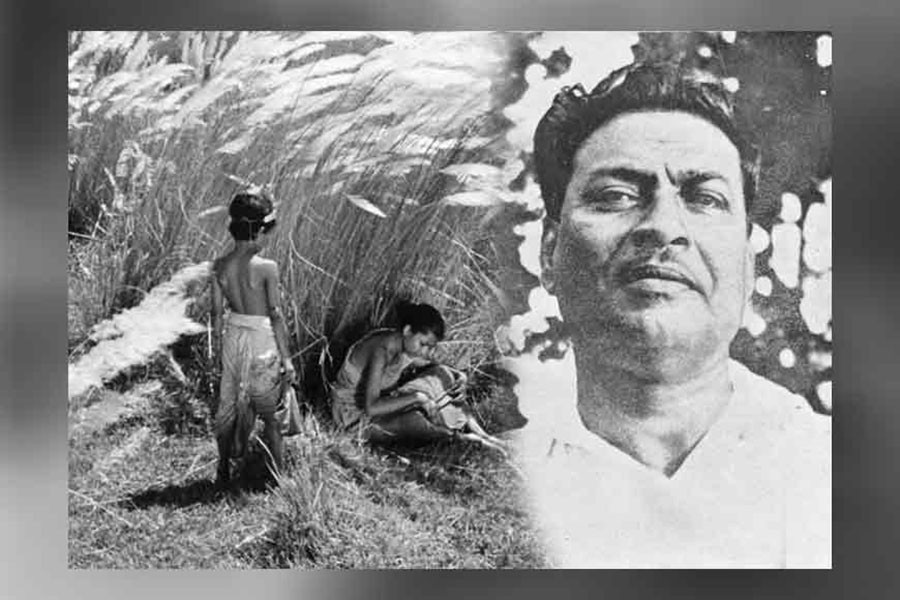In a world where nature is dying and souls feel trapped in an industrialised and fast-paced life, one can find solace in the works of Bengal's very own, Bibhutibhushan Bandyopadhyay.
Mostly set on the background of rural Bengal, his works include themes of nature not as embellishments, but almost as protagonists. From Apu of Pather Panchali to Satyacharan of Aranyak, his characters, simple and delicate, are not strange or idealistic.
Instead, along with the background, they form an image that is fresh and refreshing, and yet comfortably familiar. The entirety of it gives the reader a sense of comfort and a much needed trip to life long-lost to the industries and urbanisation of modern Bengal.
In his youth, Bandyopadhyay had to give up his studies to support his family. He took up several odd jobs, from school teacher to estate manager, which took him to the hinterlands of Bengal.
Later, his wanderlust would take him to the Arakan-Yoma forests of Myanmar. In the relatively brief 56 years he lived, Bandyopadhyay produced more than a dozen works of fiction, hundreds of short stories, a handful of memoirs and essays.
Although insolvency and poverty would not leave his side, he would overcome them through transcendence, spirituality by being in nature and human bonds. The reflections of such a philosophy can be found in his work.
One feels bad for Apu and Durga of Pather Panchali because of the abject poverty they live in. Unlike other writers of his time, Bandyopadhyay doesn't dwell on earthly realism or melodrama.
He doesn't tell us what exactly the characters are feeling, thinking. Instead, he paints a picture of the context which is so vivid that the reader feels present in the moment.
When Durga asks Apu if he would take her to see the train when she recovers, the reader can't help an outburst. Such is the work of the maestro. With the right precision of dialogues and prose, he involves the reader in an extremely immersive experience.
The main themes of his works have always been the beauty of nature and the truly satisfying life one can live in its proximity. He talks about the mysterious, hypnotising grace of nature that can be found by travelling, unveiling the unknown.
From Aranyak to Chaader Pahar, he emphasises that this unbound beauty is the most precious gift of life. Painting a surreal picture with elaborate descriptions of sky, lands, flowers, trees, he creates an experience where the reader feels what it must feel like to be there, but also feels the pain of missing out on that.
This was perhaps an intentional gesture of Bandyopadhyay. One often finds in his works that with adequate alerts about the costs of nomadic life, he urges the reader to seek out eternal beauty by travelling and exploring.
But not all his descriptions are about lands far away. In a lot of his writings, he talks about the beauty that is witnessed by ordinary people of Bengal.
In the iconic scene of Pather Panchali, the movie made by Satyajit Ray on Bandyopadhyay's novel, where Durga gets drenched in the rain is an eternal symbol of Bengal's bliss bestowed on its people.
This is Bandyopadhyay's way of reminding us that beauty can be found in everyday life despite materialistic miseries and how moments like this have to be appreciated.
In Ichhamati, when Nistarini swims in the flooded river, it reminds us how a complete embrace of nature will lead to a sense of liberation that can otherwise be restricted by social norms and regulations.
One of the crucial things mentioned in his works is the devastating effects of unplanned development. Reading the scene of Aranyak where Satyacharan sees how the beauty of Labtulia is lost because of the greed of the landowners he works for, one witnesses an ominous alarm that mankind has ignored over the years.
But none of this means that his works are severed from reality or urban life. In the novel Anubartan, he portrays the urban life of Calcutta and the complex challenges that its dwellers face.
The beautiful narration of the characters, their dialogues reflects the craftsmanship of Bandyopadhyay. In Ashani Sanket, he portrays the horrifying economic sufferings endured by rural Bengal during the Second World War and famine of 1943.
With a realistic description of the decline of the rural economy and a raw depiction of the pain of the people, Bandyopadhyay invokes a sense of compassion and fury in the readers.
Bibhutibhushan Bandyopadhyay, with his prolific and eclectic body of work, is certainly one of the best writers of Bangla literature. He is one of those timeless writers whose works still comfort readers.
For he tells us that despite the sufferings life has to offer, the road has still a song to offer.


